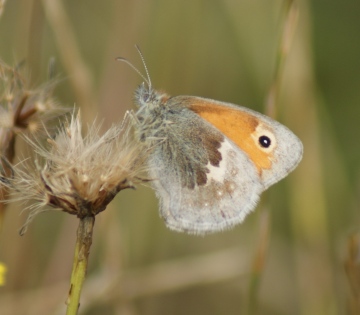Species Account for Coenonympha pamphilus
Coenonympha pamphilus (Linnaeus, 1758)
Small Heath
Lepidoptera: butterflies: Satyridae

Reproduction for study and non-profit use permitted, all other rights reserved.
Taxonomic group: butterflies (Lepidoptera: butterflies) - County data
View time series maps for Coenonympha pamphilus
member log-on for taxon report
Status: NT;Section 41 Priority Species
Essex RDB: Listed
Images
upload a new image
Small Heath on UK Butterflies website
Essex Red Data List comment
added to list due to 'Near Threatened' national conservation status (2010 review, Butterfly Conservation)
Species text
The Small Heath is still a widespread butterfly, but has been added to the UKBAP in the review completed in 2007 due to major declines in both its distribution and population. The distribution trend represents a comparison between data for the 1970-1982 period, and data for the 1995-2004 period. The start date for the long-term population trend varies, but is generally a date between 1976 and 1984, depending on the species. (www.ukbutterflies.co.uk). The butterfly occurs on grassland where there are fine grasses, especially in dry, well drained situations where the sward is short and sparse (Asher et al. 2000). Hence in Essex and the modern agricultural landscape many sites are on nutrient-poor and undisturbed brownfield land. The larval food plants are various Bents Agrostis spp., Fescues Festuca spp. and Meadow-grasses Poa spp. References
Habitats
Recorded management for locations with Coenonympha pamphilus
Recorded substrate and hydrology for locations with Coenonympha pamphilus
Why not join the Club, register and add a new species page
Interpretation of distribution maps



















